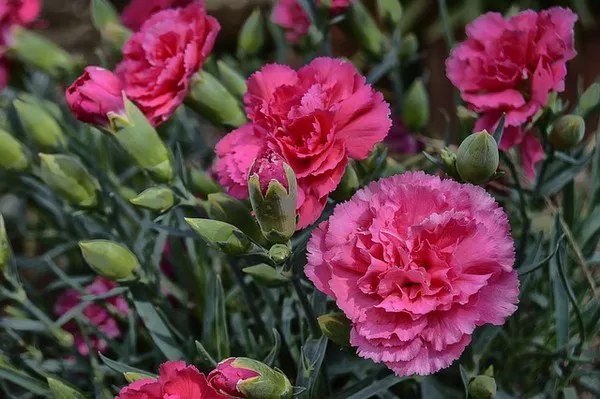Carnation flowers, with their vibrant hues and delicate petals, have been adored for centuries as symbols of love, admiration, and celebration. Whether you’re a seasoned florist, a hobbyist gardener, or simply a lover of nature’s beauty, preserving carnations through pressing can immortalize their charm and elegance. In this comprehensive guide, we delve into the art and technique of pressing carnation flowers, ensuring their longevity and retaining their splendor for years to come.
Understanding the Art of Pressing Carnation Flowers
Pressing flowers is an ancient practice that dates back centuries, with its roots embedded in various cultures worldwide. The process involves carefully flattening and dehydrating fresh flowers to retain their form and color, creating stunning botanical specimens suitable for various crafts, decorations, and keepsakes.
Carnation flowers, known scientifically as Dianthus caryophyllus, possess unique characteristics that make them ideal candidates for pressing. Their sturdy petals and relatively flat shape allow for easier preservation compared to more delicate blooms. However, successful pressing relies on proper preparation, technique, and patience.
Materials Needed for Pressing Carnation Flowers
Before diving into the pressing process, gather the necessary materials:
1. Fresh carnation flowers – Select blooms at their peak, preferably with vibrant colors and minimal blemishes.
2. Absorbent paper – Acid-free blotting paper or parchment paper works best for absorbing moisture during pressing.
3. Heavy books or flower press – Choose flat, weighty objects to apply even pressure and facilitate drying.
4. Cardboard or stiff paper – These provide a firm surface for arranging and protecting flowers during pressing.
5. Scissors or pruning shears – Use sharp, clean tools to trim stems and remove excess foliage.
6. Optional: Microwavable flower press – A quicker alternative to traditional pressing methods, suitable for those seeking expedited results.
Step-by-Step Guide to Pressing Carnation Flowers
Follow these steps to ensure optimal results when pressing carnation flowers:
1. Harvesting: Choose carnation blooms in the morning when they’re fully open but not yet exposed to the sun’s intense heat. Use sharp scissors or pruning shears to snip flowers, leaving about an inch of stem attached.
2. Preparation: Remove any excess foliage or side buds from the stems, ensuring a clean and tidy appearance. Trim the stems to a uniform length for consistency in pressing.
3. Arrangement: Open the selected blooms gently and arrange them face down on absorbent paper, ensuring they don’t overlap. Leave ample space between flowers to facilitate even drying.
4. Pressing: Carefully transfer the arranged flowers between layers of absorbent paper within a flower press or heavy book. Apply even pressure by stacking additional books or weights on top. Alternatively, if using a microwavable flower press, follow the manufacturer’s instructions for optimal results.
5. Drying: Allow the carnation flowers to dry undisturbed for at least two to four weeks, depending on humidity levels and flower thickness. Check periodically for any signs of mold or discoloration, replacing the absorbent paper if necessary.
6. Finishing Touches: Once fully dried, carefully remove the pressed carnation flowers from the press or book. Handle them gently to avoid damaging the delicate petals. Trim any excess paper around the flowers for a neat appearance.
7. Storage: Store the pressed carnation flowers in a cool, dry place away from direct sunlight to prevent fading. Consider framing them, incorporating them into botanical art, or using them for various crafts and decorative purposes.
Tips for Successful Pressing
1. Choose carnation blooms at their peak freshness to ensure vibrant colors and optimal results.
2. Maintain a consistent temperature and humidity level throughout the pressing process to prevent mold or decay.
3. Experiment with different arrangements and pressing techniques to achieve varied effects and textures.
4. Consider using a flower press or microwavable press for more efficient and consistent results, especially for larger quantities of flowers.
5. Exercise patience and care during each step of the pressing process to preserve the natural beauty of the carnation flowers.
Conclusion
Pressing carnation flowers offers a timeless way to capture and preserve their beauty, allowing enthusiasts to enjoy their splendor long after they’ve faded in the garden. By following the steps outlined in this guide and incorporating tips for successful pressing, you can create stunning botanical specimens that serve as cherished keepsakes, thoughtful gifts, or captivating additions to various creative projects. Embrace the art and tradition of pressing carnation flowers, and let their timeless charm brighten your life for years to come.


